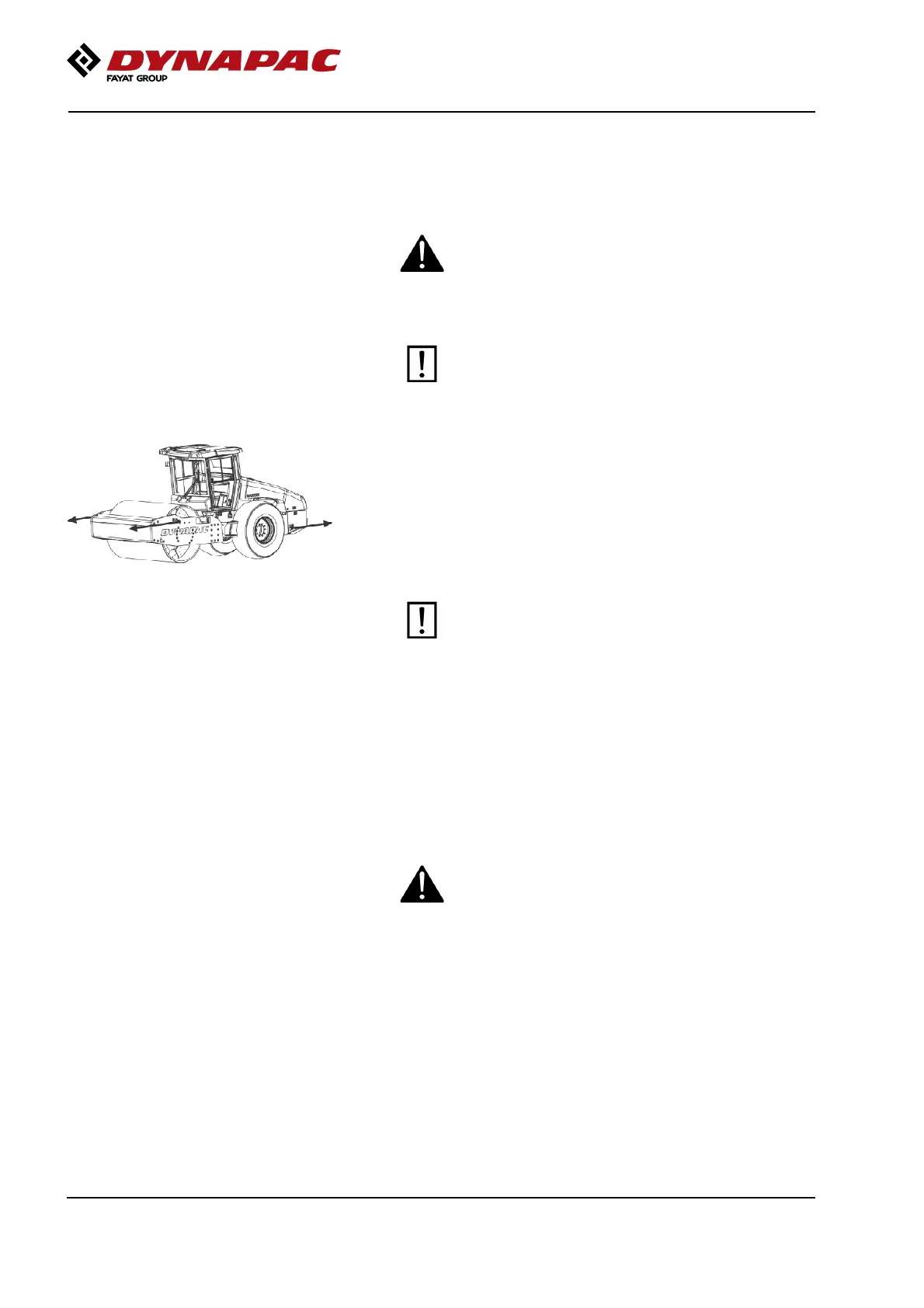Miscellaneous
4812165301.pdf 2022-09-02
To leave the bypass position, unscrew the adjusting
screw (B) until it stops and then lock the valve again
with the hex nut (A).
Towing the roller
When towing/recovering, the roller must be braked
by the towing vehicle. A towing bar must be used
as the roller has no brakes.
When towing/recovering, the roller must be braked
by the towing vehicle. A towing bar must be used
as the roller has no brakes.
The roller must be towed slowly, max. 3 km/h (2
mph) and only towed short distances, max. 300 m
(330 yards).
The roller must be towed slowly, max. 3 km/h (2
mph) and only towed short distances, max. 300 m
(330 yards).
Fig. Towing
When towing/retrieving a machine, the towing device
must be connected to both lifting holes. The pulling
force must act longitudinally on the machine as shown
in the figure. Maximum gross pulling force 200 kN (44
960 lbf).
Reverse the towing preparations according to
alternative 1 or 2 in the preceding section.
Reverse the towing preparations according to
alternative 1 or 2 in the preceding section.
Transport
Tie-down and secure the machine according to the
Cargo Securing Certificate for the specific machine
if this is avaliable and applicable.
If not, tie down and secure the machine according to
the cargo securing rules that are valid for the country
where the transport takes place.
Never lash over the machine’s articulated joint,
nor over the machine’s operator platform.
Never lash over the machine’s articulated joint,
nor over the machine’s operator platform.
Before securing the machine ensure that :
• the parking brake is applied and in good working condition
• the articulated joint is in closed position
• the machine is centered laterally on the platform
• the lashings are in good condition and fulfills the
corresponding rules for transport securing.
96
